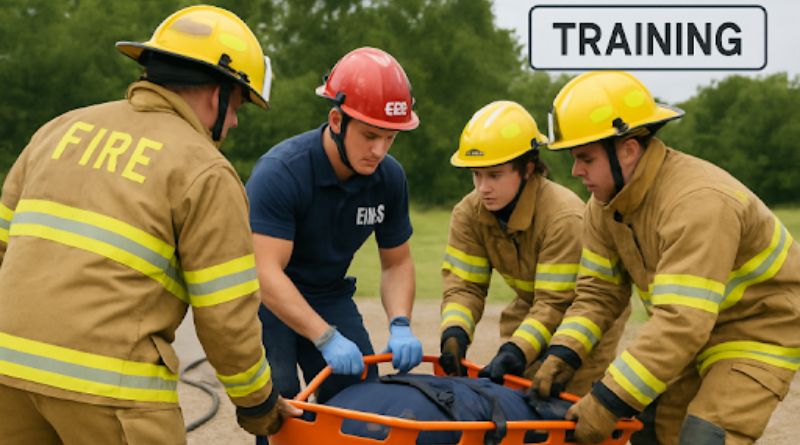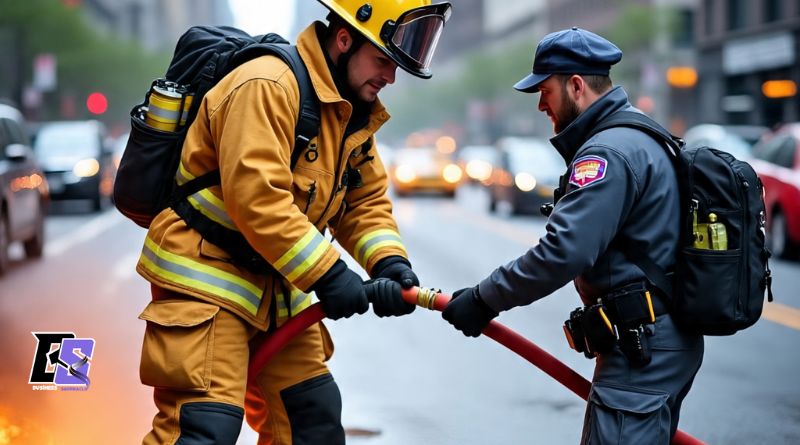How Firefighter and EMT Training Is Shaping Modern Emergency Response Careers
The Role Of Comprehensive Training In Shaping First Responders
Behind every successful emergency response lies months, if not years, of rigorous training and preparation. Firefighters and EMTs are called upon in society’s most urgent moments, requiring a blend of instinct, technical know-how, and composure. Their ability to act decisively and effectively comes from a foundation of comprehensive education and diverse hands-on experiences. For individuals considering a future in emergency services, enrolling in an emergency medical responder course Texas provides an excellent starting point, merging modern curriculum with the latest industry standards. Training for these roles goes well beyond traditional classroom instruction. Modern programs blend theoretical learning with hands-on simulations, technical skill development, and meaningful community engagement. The demand for highly skilled professionals continues to grow, reflecting the increasing number of emergency responses they are responsible for handling.
Scenario-Based Learning: Real-World Skills For High-Pressure Situations
Realism is at the heart of today’s emergency responder education. Trainees must not only understand procedures but also apply them effectively in unpredictable circumstances. Scenario-based learning introduces lifelike emergencies—ranging from multi-vehicle accidents to high-rise fires—challenging students to make swift decisions while managing stress and communicating with their team. These realistic rehearsals also serve as diagnostic tools, revealing gaps in knowledge or teamwork that can be addressed in real time. This iterative process ensures that emergency responders develop not only individual competency but also a strong sense of unit cohesion, which is crucial during high-stress, real-world calls.
Physical Fitness And Mental Resilience: Two Sides Of The Coin
The demands faced by firefighters and EMTs are unique and challenging. Their daily responsibilities require peak physical fitness paired with versatile technical proficiencies. Training academies place a strong emphasis on cardiovascular health, strength, and stamina—foundational to lifting patients, dragging hoses, or carrying heavy equipment. However, mental resilience is equally essential for sustained effectiveness.
Modern agencies have incorporated wellness programs focusing on stress management, mindfulness, and peer support systems. These initiatives empower responders to recognize the signs of burnout, process traumatic experiences, and seek assistance when needed. Fostering this environment of mutual support leads to healthier, longer-serving, and more effective EMTs and firefighters.

The Value Of Technology In Training And Response
Today’s emergency responder training leverages emerging technologies to create safer and more effective learning environments. Virtual reality provides realistic, interactive simulations where mistakes can be corrected in real-time without real-world consequences. Drone technology enables the detailed analysis of complex fire grounds or accident scenes, equipping trainees and responders with better situational awareness before they set foot on site. Additionally, the use of data analytics in training programs allows departments to tailor curricula based on real community threats and national response trends.
Building Strong Community Relations Through Outreach And Education
Firefighters and EMTs serve not only as emergency responders but as vital educators and advocates within their communities. Regular outreach—such as fire safety classes for children, CPR training for adults, and open house events—fosters trust between agencies and the public. This pre-established rapport proves invaluable during emergencies when public cooperation and clear communication can save lives.
Many departments have expanded their approach by involving citizens in preparedness initiatives, ultimately reducing risk and boosting overall resilience. Education and transparency are key: well-informed communities partner with first responders to create safer neighborhoods for everyone.
Industry Trends: Employment Outlook And Future Opportunities
As the population increases and urban centers grow, so does the need for quick-thinking, highly trained emergency personnel. The U.S. Bureau of Labor Statistics projects steady growth for both firefighters and EMTs through 2032, with robust demand in regions prone to natural disasters, extreme weather, and large-scale public events. Professionals possessing advanced certifications or specialized skills—such as hazardous materials response, technical rescue, or instructor qualifications—find themselves particularly well-positioned for leadership and instructional roles within their organizations.
Moreover, continuous adaptation to new challenges, public health trends, and advances in medical technology ensures these careers remain dynamic and rewarding. Whether working in fire suppression, emergency medicine, or community risk reduction, there are numerous opportunities for advancement and specialization.
Best Practices For New And Veteran Responders
- Prioritize continuing education and certification updates through accredited programs.
- Regularly connect with local and national peer networks for support and shared learning.
- Remain up to date on evolving safety standards, innovations, and best practices.
- Take a proactive approach to physical training and mental well-being for sustained resilience on the job.
Continuous Learning: Staying Ready For Anything
In the world of emergency response, preparedness is a journey, not a destination. Departments that champion lifelong learning—through ongoing education, scenario-based drills, and adaptability to emerging hazards—are best positioned to protect their communities. Responders who embrace these values rise beyond technical excellence, becoming vital pillars of community safety and resilience.
Read Also:




